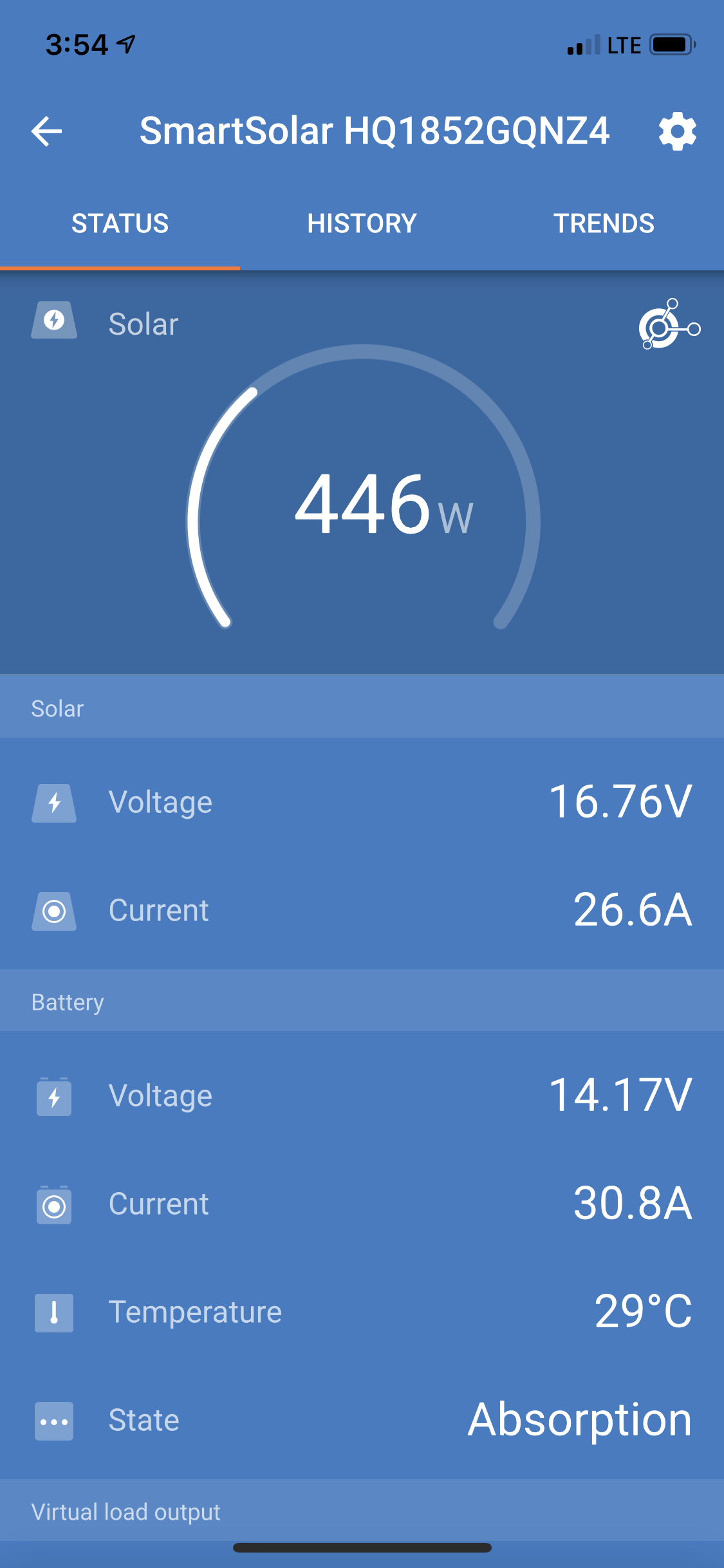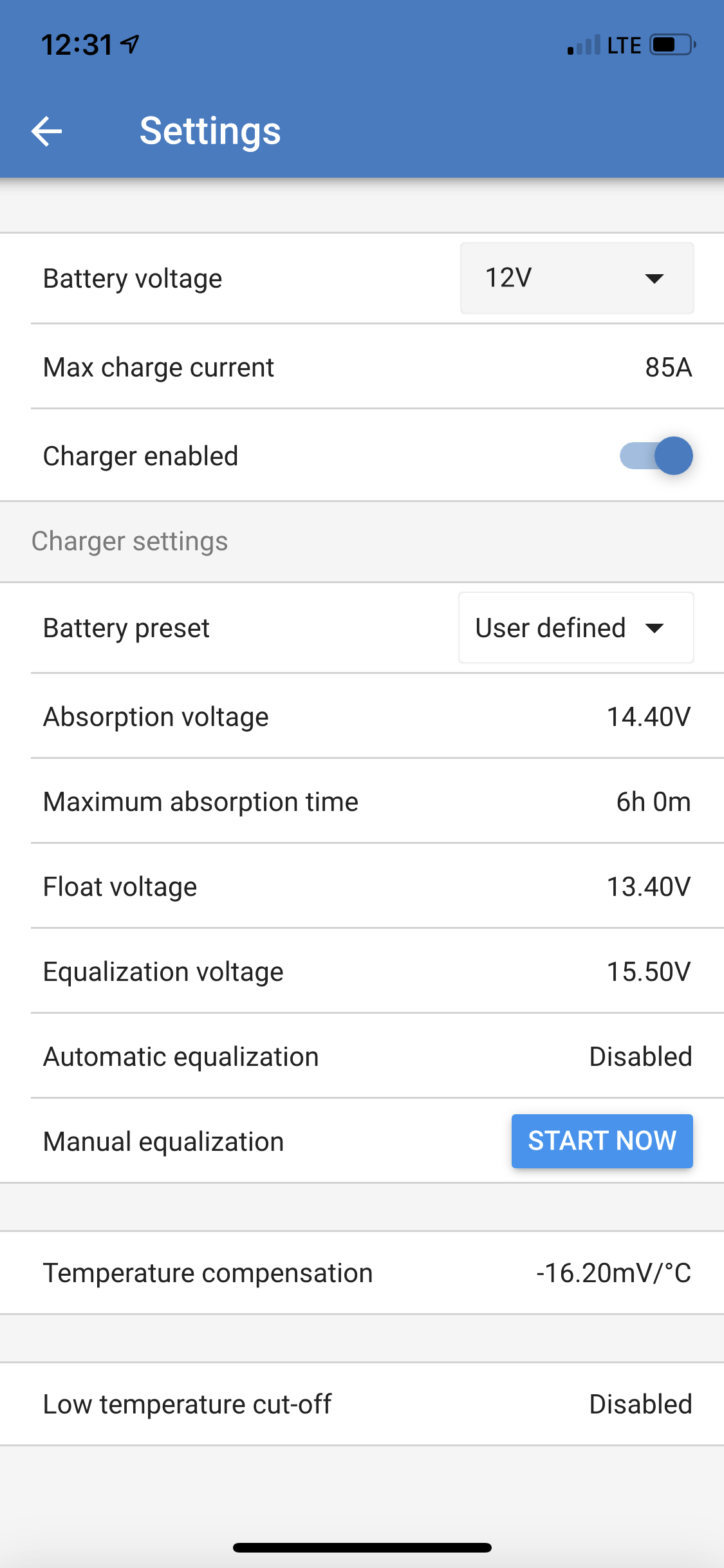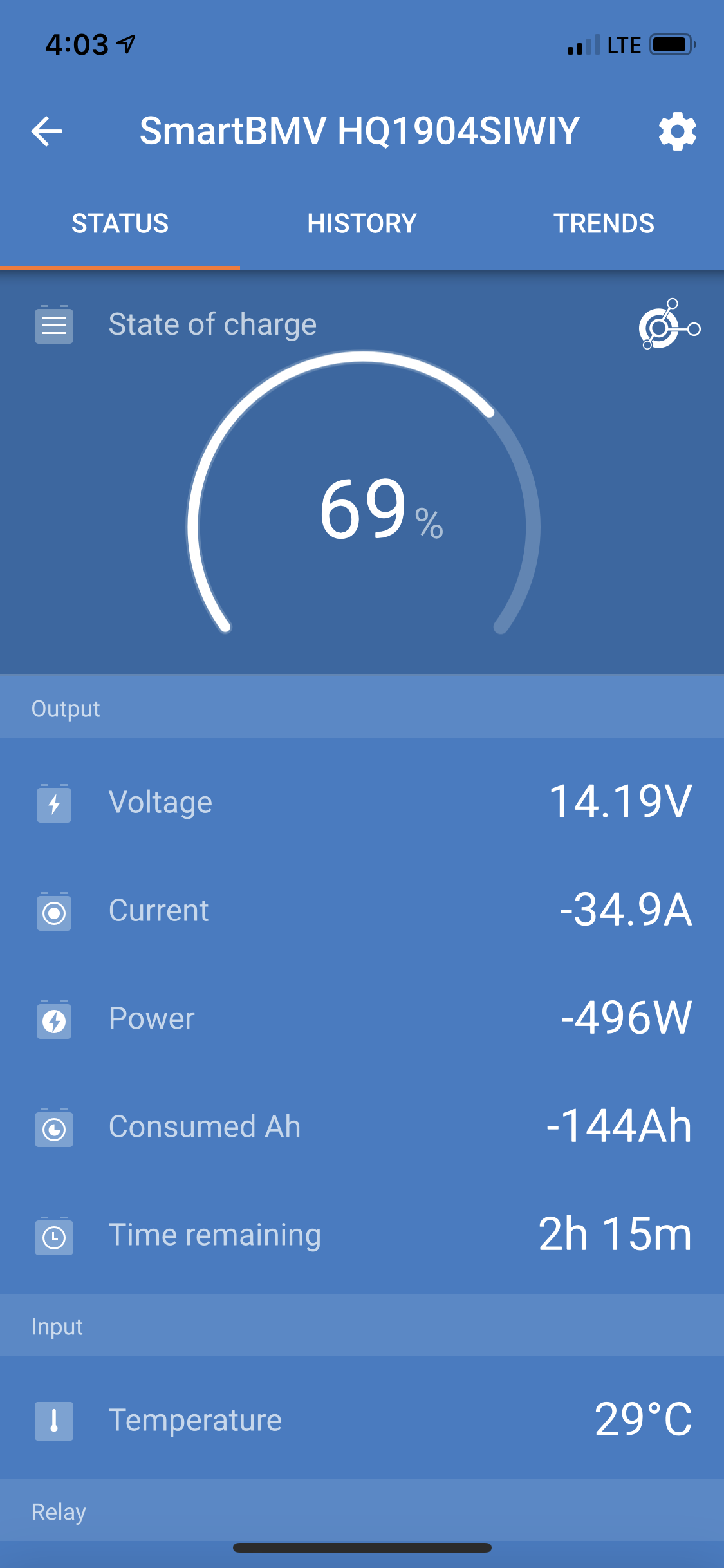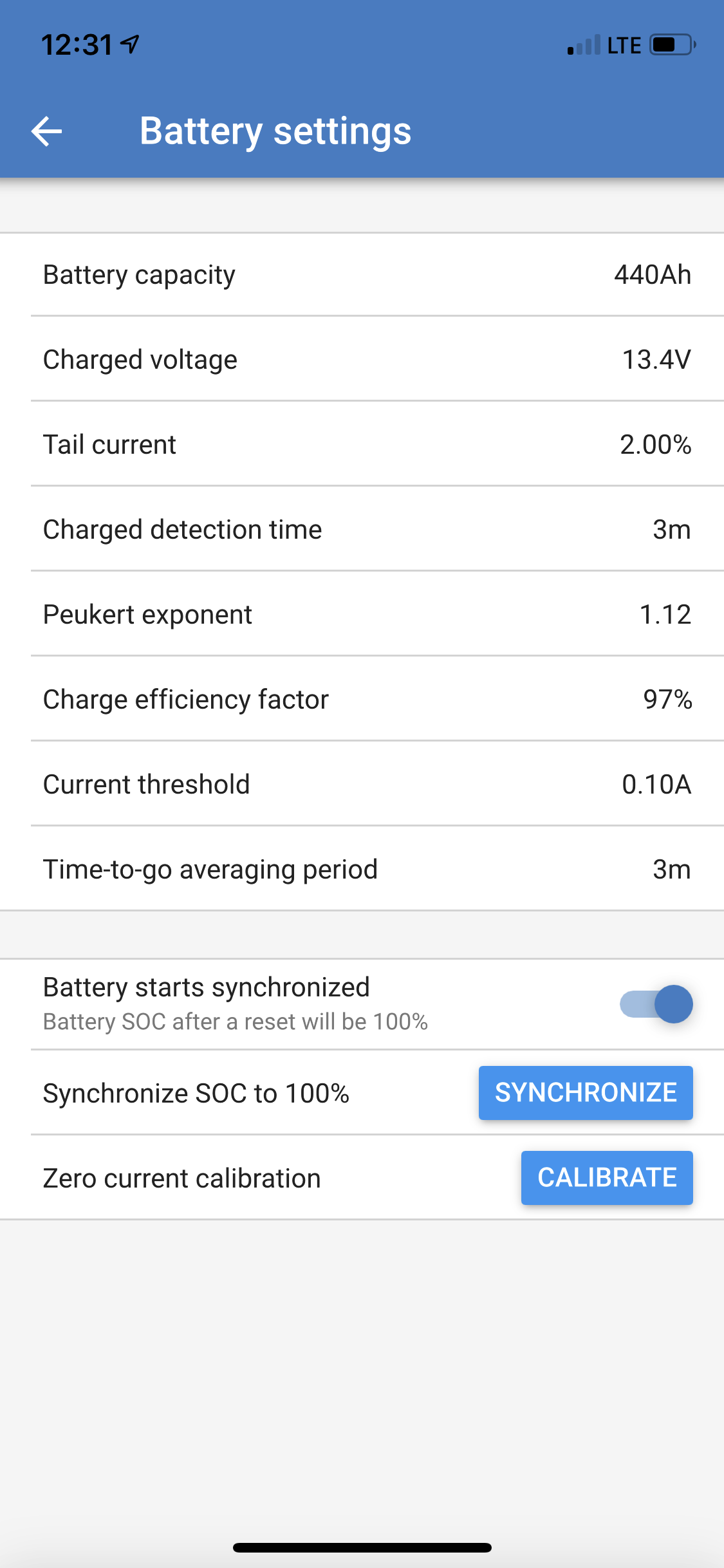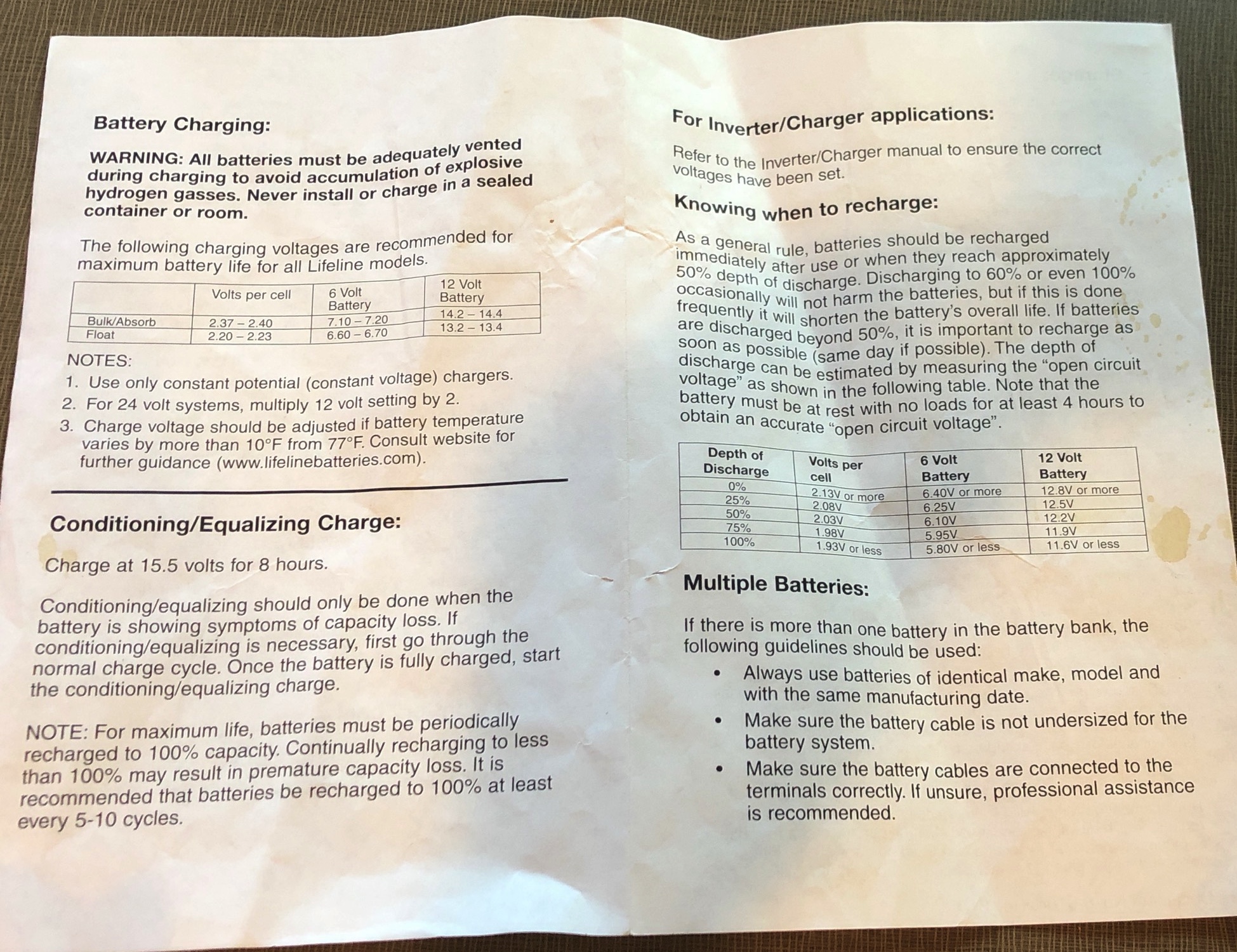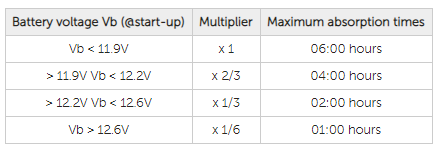Hi, We recently got a SmartSolarMPPT 85/150 and a BMV-712 in our motorhome. We have 5 x 160w panels on our roof, and run 4 AGM batteries in a 12v system with a total of 440AH.
I have noticed that sometimes the SmartSolar continues to be putting in power to the batteries even after they have exceeded the 'charged voltage'. Why is this? The setting for 'charged voltage' in the BMV-712 is set at 13.4 (per LifeLine AGM manual). The settings in the SmartSolar MPPT are custom set to Absorption 14.4v, Float 13.4, Equalization 15.5v. I have the SmartSolar and BMV linked via Bluetooth.
I'm attaching screenshots from the App on a day when it was really sunny and the battery voltage was up to 14.17/14.19v. Do I have a setting wrong? Thanks so much!
